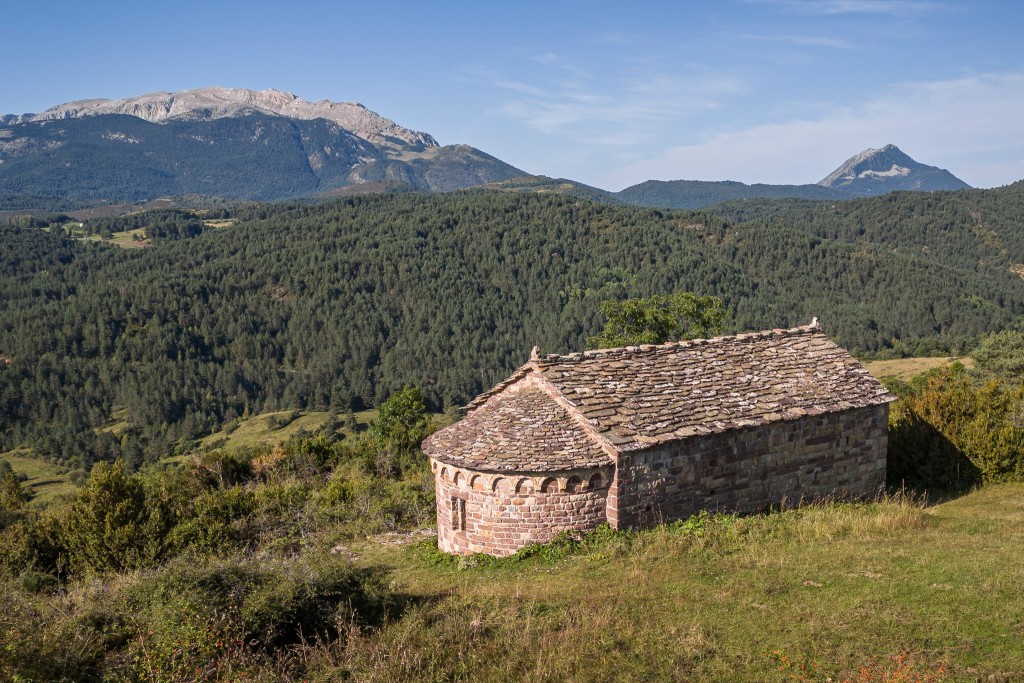The mission was simple but ambitious: to build new monasteries and adorn their domains with small churches. This particular style of construction was continued in the 12th century by modest local stonemasons. The fruits of their labor can still be admired today on the exterior walls of several churches, hermitages, and monasteries in the Benasque Valley, where the iconic pilasters and friezes of small arches—typical features of this sober and elegant style known as Lombard Romanesque—can be identified.
Walk these paths and discover the origins of this architectural style that continues to amaze us with its simplicity, beauty, and connection to nature.
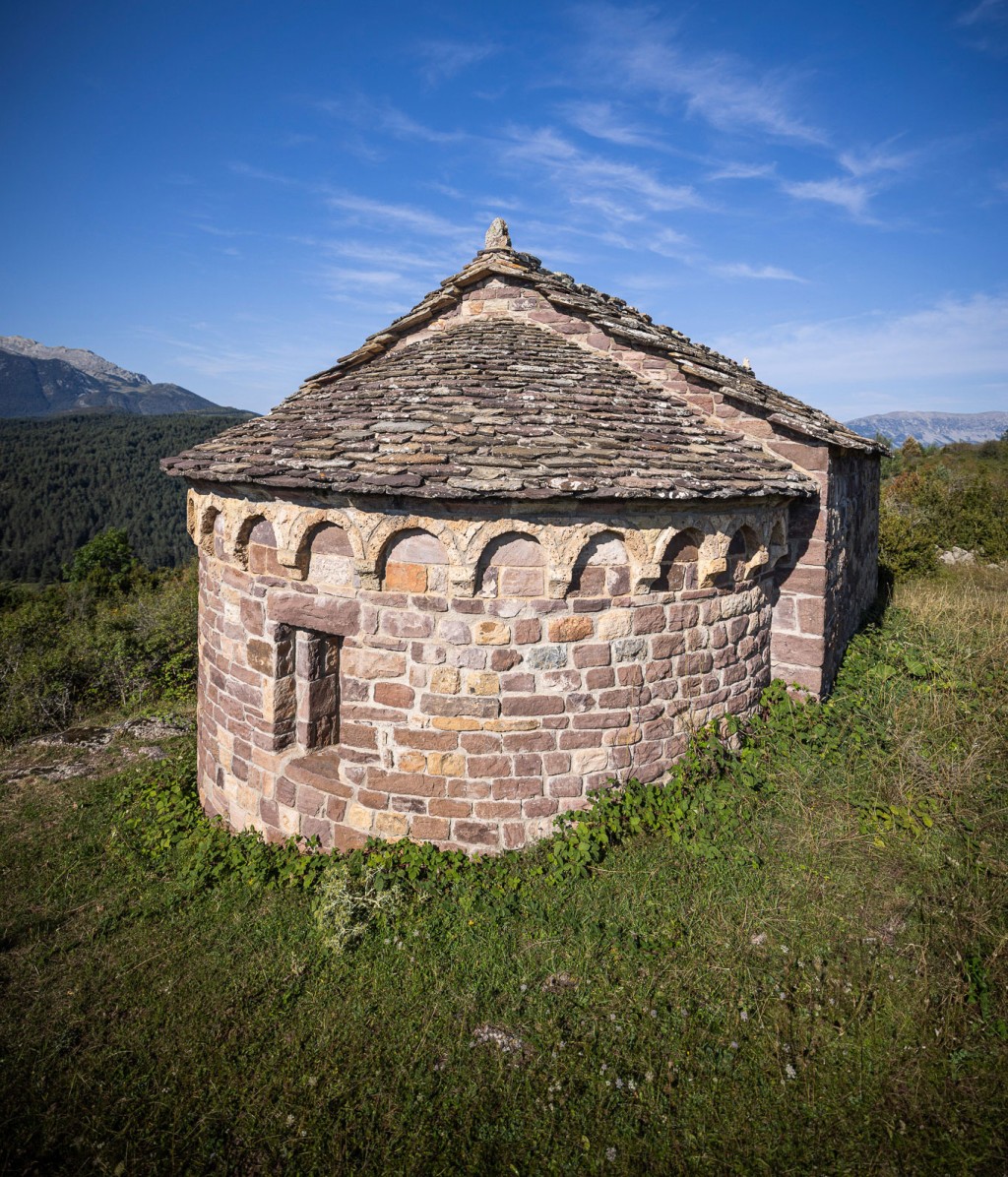
Ermita de la Virgen de Gracia (El Run)
A Jewel of Lombard Romanesque
This hermitage is a magnificent example of what a Cultural Park represents, as it combines a monument of great cultural significance with an incredible natural landscape at the foot of the Sierra de Chía. Its location likely reflects its historical role as a waypoint for people and goods traveling along the ancient route that bypassed the Congosto de Ventamillo gorge.
The artistic importance of the Hermitage of the Virgin of Grace lies in it being one of the best-preserved Romanesque constructions in the Cultural Park, specifically in the Lombard Romanesque style brought to this valley by master builders from northern Italy in the 9th century. In reality, this building was executed by local stonemasons but followed the Lombard style of construction and decoration. Its consecration date is even known: in 1103, it was consecrated by Bishop San Ramón of Roda.
Architecture and Decoration
The construction itself reveals its history. On the main façade, one can clearly see how a pillar marks the oldest construction phase, where the Lombard decoration is concentrated, while the other phase is a later, simpler, and more popular addition. Like many other small medieval temples in the valley, its interior space was organized into a single nave ending in a semicircular apse.
From where you are reading this panel, you can easily identify the characteristic elements of Lombard Romanesque. On its apse, above the plinth, the pilasters or lesenes begin, and a gallery of blind arches runs along its entire upper perimeter. Also remarkable is its small tower, where stonemasons managed to place this modest bell tower atop the roof, continuing the Lombard architectural language: arches, paired windows, and a decorative zigzag pattern.

Iglesias de Santa María y San Pedro (Villanova)
Perched on the rocky spur where the historic center of Vilanova/Villanova sits, the beauty of the Romanesque apses of these two churches stands out. They are jewels of its medieval past. This is an exceptional case in the entire valley, as two constructions of such architectural magnitude and cultural value are found in the same village and just a few meters apart.
Santa María and San Pedro were begun in the 11th–12th centuries, following the architectural style and decorative repertoire brought to the valley by master builders from Lombardy. As was common throughout the valley, the original medieval temples were expanded and remodeled in the 16th–17th centuries, resulting in the buildings we see today, characterized by their robust architecture built stone by stone with perfectly crafted ashlar blocks.
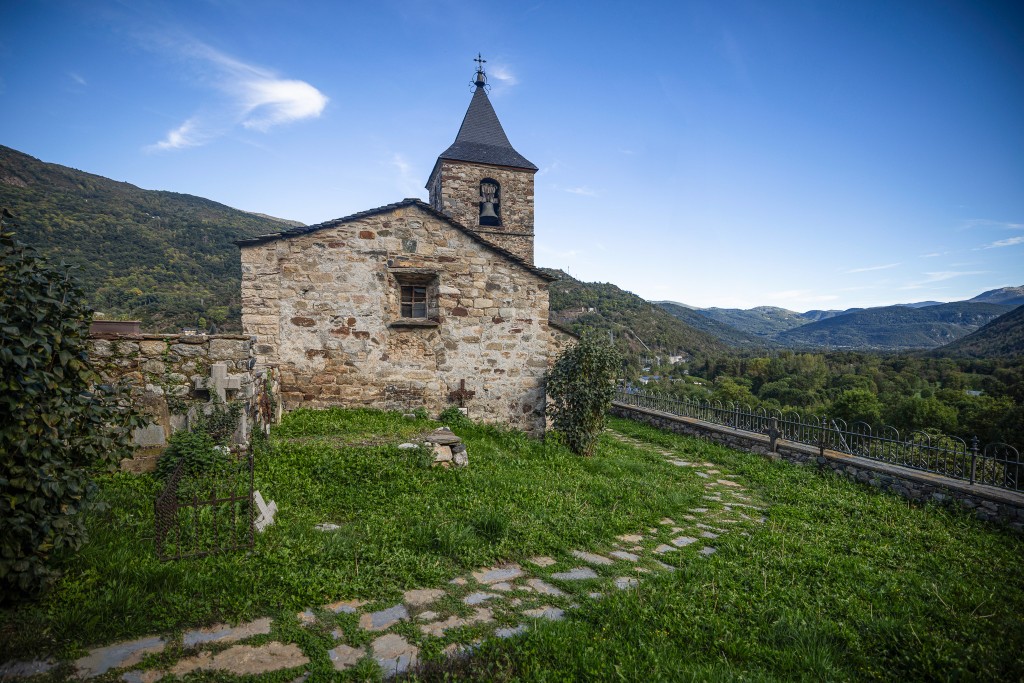
Iglesia San Andrés (Sos)
Upon reaching Sos, walk through its small historic center until you arrive at this church, which stands apart from the village. Once there, a splendid panorama will unfold before you: on one side, the Sierra de Chía; on the other, the Church of San Andrés, separated by the Ésera River, or the Sositana Valley, as it was called when the Vall de Benàs was part of the medieval County of Ribagorza. From its Romanesque past, it retains its spatial layout with a single nave, two chapels on either side forming a cross-shaped plan, and, most notably, its semicircular apse.
Notice the building attached to the church tower—it is the old abbey where the religious figures who served the parish once lived.
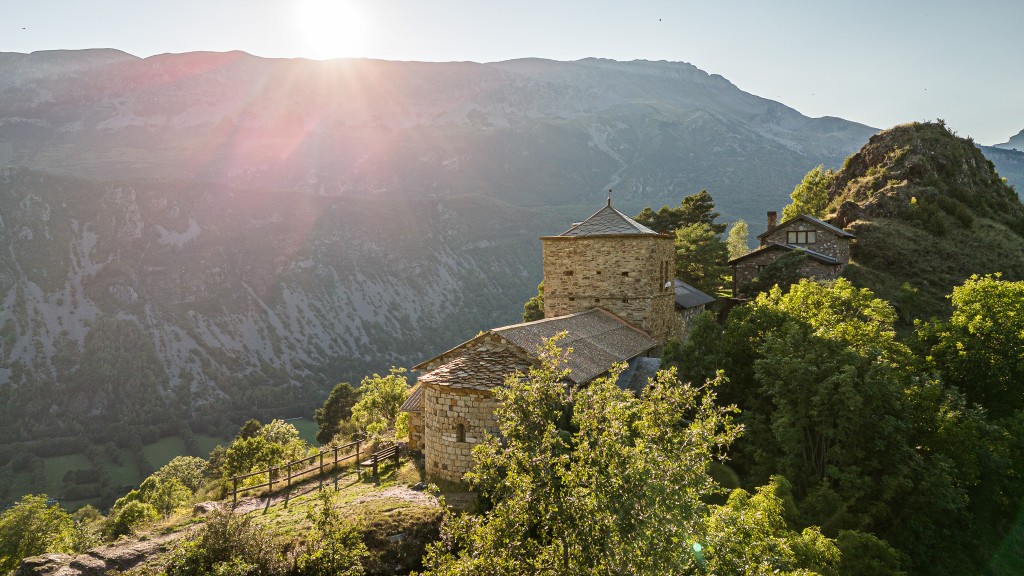
Monasterio de los Santos Justo y Pastor (Urmella)
From the heart of medieval Europe, Charlemagne and the Pope decided to expand Christianity, reaching even remote corners like this Pyrenean valley. Following this mission, the Bishops of Urgell promoted the creation of the Monasteries of San Pedro de Taberna (Seira), San Martín (Benasque), and the one dedicated to Saints Justus and Pastor in Urmella, in the northern part of the County of Ribagorza—today encompassed by the Cultural Park. Of the original monastery in this Solano village, only its abbatial church remains, reflecting in its architecture the complex history of this monument. Here, the Romanesque construction begun by Lombard masters and continued by local stonemasons in the 11th century is intertwined with later Baroque reforms of the 17th century.
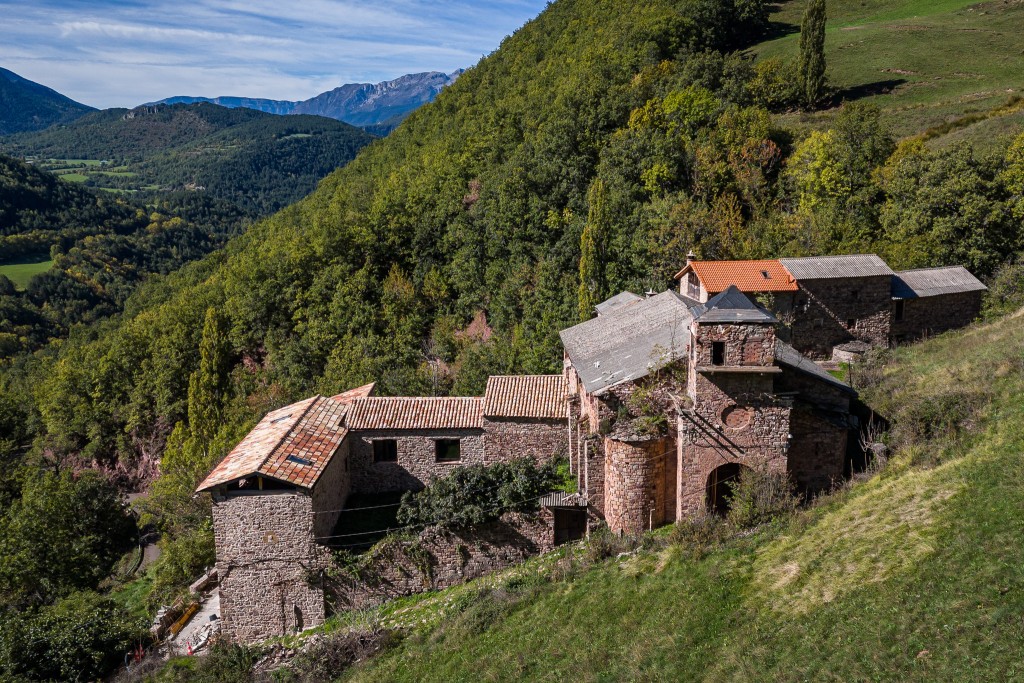
Ermita de Nuestra Señora o Santa Paula de Turbiné (Laspaúles)
The imposing Turbón Massif stands guard over this simple hermitage, consecrated by Bishop Gaufrido of Roda de Isábena in 1143, along with the temples of Ardanué and Villarué. Santa Paula is a modest Romanesque temple where the valley’s people applied the Lombard construction style, especially recognizable in the gallery of arches running along its apse.
It seems there may have been a Roman altar or shrine here before the medieval era, as the site is on the route leading to the Puerto de Aras pass, which is lined with a series of medieval hermitages curiously dedicated to Roman-era martyrs, such as Santa Paula.
